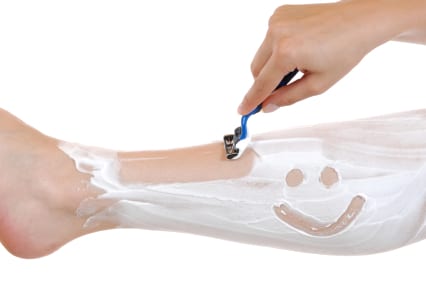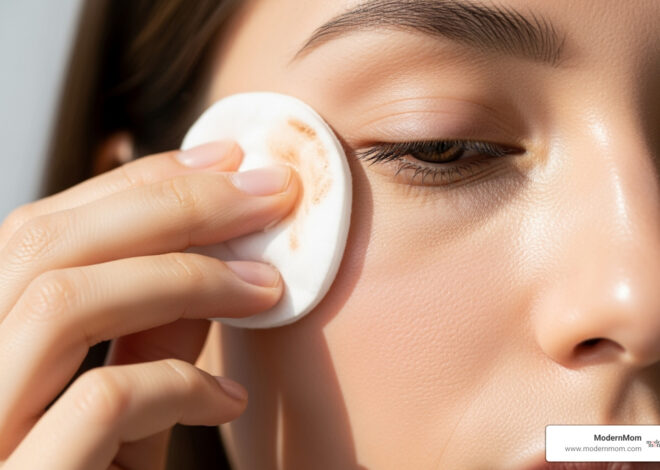To me, shaving is an interesting aspect of being a female, since it is more of a beauty routine than a hygienic or health necessity. For some cultures and women, shaving is neither interesting and nor necessary. However, in our society, it is noticed. For some, hair on the face or under the arms can be embarrassing and women seek to have it removed.
Recently, I was listening to a public radio story about how female beauty is culturally perceived. According to the study featured in the story, it seems that women who shave their underarms are perceived as more attractive and intelligent than those who have armpit hair. The study was done with the same women shown either shaven or not. (I have been searching for a reference, but can’t find the NPR story, which aired earlier this month – sorry, as there were other aspects of the story that were fascinating!) Nice to know, though, that my armpits influence perception about who I am – NOT!!
WHY SHAVE??
Underarm Odor – One reason that males seem to have more body odor is that men mostly don’t shave their underarms. And, the bacteria that resides in the hair can cause odor. Most women do shave their underarms, which minimizes the bacteria that causes body odor. Of course, washing that area is another way to reduce bacteria, if you’re not a shaver.
Cultural Reasons – For centuries, women have wanted smooth, hairless skin. In fact, in the Stone Age, cavewomen (and men) used sharpened rocks and seashells to scrape hair away. Sounds painful, but they may have done that to stay cool or to remove infestations. I wonder if beauty entered the cave way of living, and smooth skin was seen as an attractive enhancement?
Early Arabian women introduced bandandoz, a precursor to the epilator. They laced cotton string between their fingers to form a cat’s cradle, then ran it briskly over their legs to simultaneously encircle and pull out hairs. Even depilatories, creams, and lotions, which chemically dissolve hair, have an origin in the history of shaving. In the early 18th century, American women prepared poultices of caustic lye, which, when applied to legs, burned away unwanted hair.
During Elizabeth I of England’s reign in the 16th century, the Queen herself, along with all the ladies of the court, began plucking the hair from the top of their foreheads in order to make their foreheads appear higher and nobler.
RECENT HISTORY
Around the turn of the 20th century, fashions began changing and women started showing more skin. Women began baring their legs (up to the knee!) and wearing sleeveless flapper dresses. Every American woman of fashion sported clean, hairless legs and underarms.
In the early days of World War II, nylon hosiery became scarce. Women had to go without stockings, so they cleverly applied leg makeup instead, complete with a seam up the back of the leg applied with a black marker. Smooth, hairless legs made this illusion much easier to achieve.
WHAT ABOUT THE HAIR DOWN THERE??
During bathing suit season, many women don’t want pubic hair showing out of their summer attire or tiny two-piece suits or bikini. Some feel the same way throughout the year and go to great extents to remove the hair. I have included some suggestions on how best to remove unwanted hair. Remember, no matter what method you choose, be careful not to cut or irritate the skin. If that happens, infection can occur just like in other areas of the body when the skin has been cut or a rash develops. Antibacterial cream can be used for minor problems, but check with your health care professional if there is more extensive redness, bumps, swelling, or drainage.
Shaving – Soap and water is not a good choice for a close shave. Soap is meant to cleanse skin and remove oils along with the dirt, and it leaves your skin dry and vulnerable. Water on its own does soften skin and hair, but evaporates too quickly to help your shave. Shaving gel provides a protective barrier that keeps hair soft during the shave. It also lubricates your skin, allowing the razor to glide more easily. Another bonus: shaving gel won’t clog your razor the way ordinary soap can. After shaving, be sure to use a good bikini moisturizing lotion to help the skin look and feel smoother.
Waxing – In an article in Women’s Health Magazine, titled, “Beware the Killer Bikini Wax,” Linda K. Franks, M. D., an assistant clinical professor of dermatology at the New York University School of Medicine stated: “Pubic hair is there for a reason – to protect the sensitive skin and mucous membranes in the genital region. Getting a wax literally strips away that layer of protection.”
The article goes on to state: “Waxing can also pull off tiny pieces of the skin’s outermost layer, creating a portal through which bacteria can enter the body. What’s more, the process creates inflammation, which can trap bacteria beneath the skin. All of this sets the stage for skin infections (including staph), folliculitis (infection of the hair follicles), and ingrown hairs.”
Just like with shaving, if you decide to wax, let your health care professional know if you develop redness, bumps, swelling, or drainage, as those can develop into a serious infection.
Whether you choose to be hairy Mary or Venus smooth, it shouldn’t matter. What is important is that you accept yourself, wear the styles that suit you best and enjoy the beauty of the season.
Some of the info in this post came from an article on beinggirl.com about the history of shaving – check it out!





